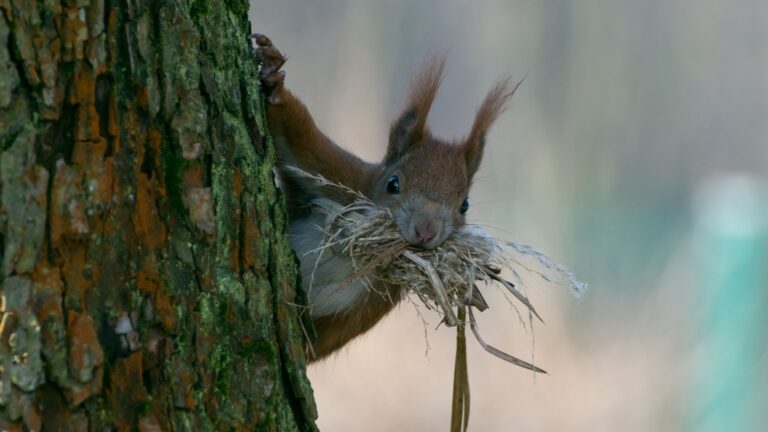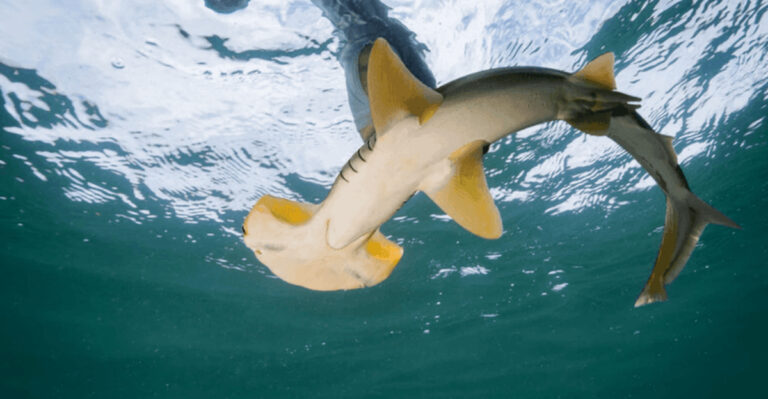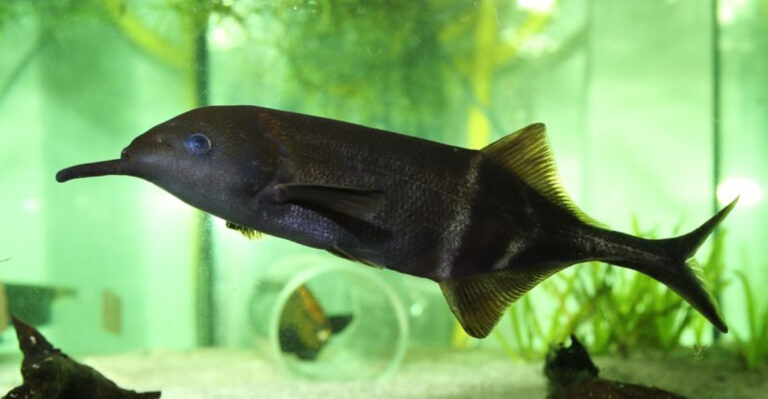Why One Blue Whale Holds The Power To Reshape An Entire Ecosystem
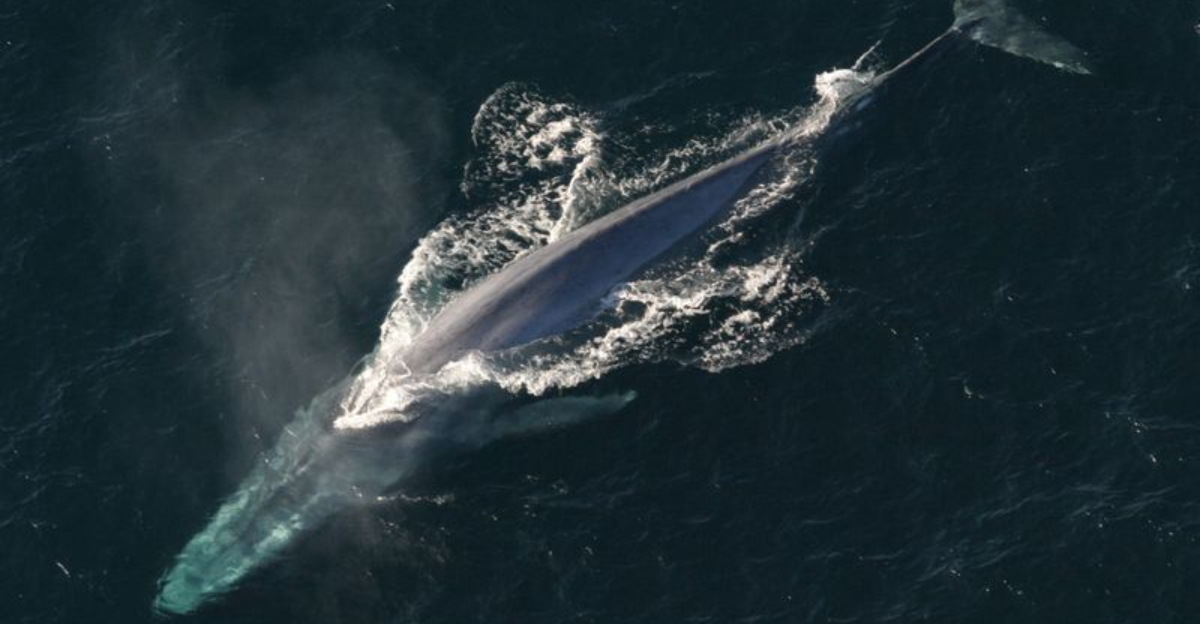
Blue whales, the largest creatures to ever exist on our planet, aren’t just magnificent to behold – they’re ecosystem engineers. These ocean giants influence marine environments in ways that ripple through the entire food web.
At up to 200 tons each, a single blue whale can transform nutrient cycles, affect prey populations, and even impact our climate. Here’s how these remarkable mammals reshape the oceans they call home.
1. Nutrient Cycling Superstars
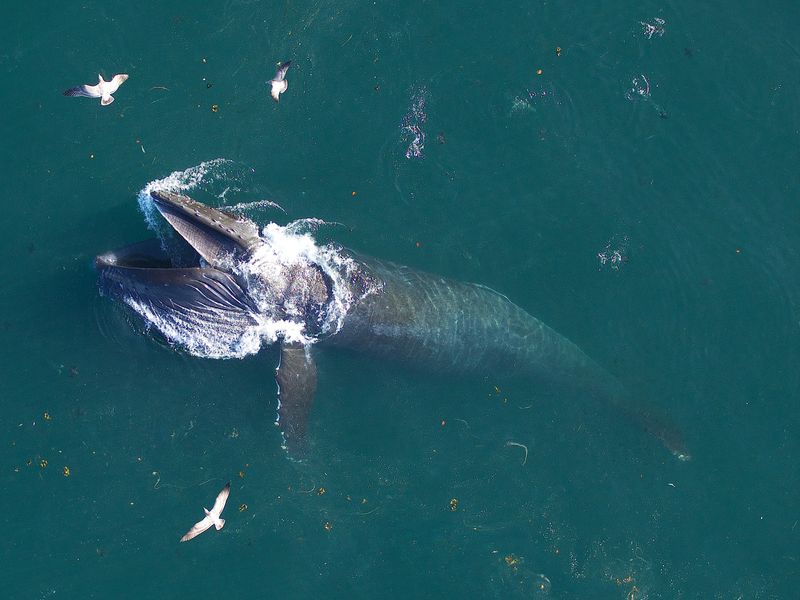
Blue whales fertilize the ocean through their massive poop clouds! These nutrient-rich waste plumes contain iron and nitrogen that float toward the surface, feeding phytoplankton blooms.
These tiny plants form the base of marine food webs and produce about half of Earth’s oxygen. A single whale’s bathroom habits can trigger blooms visible from space!
Scientists call this the “whale pump” – a natural fertilization system that’s far more efficient than anything humans could design. When whale populations thrive, these nutrient cycles intensify, boosting productivity throughout entire ocean regions.
2. Carbon Capture Champions
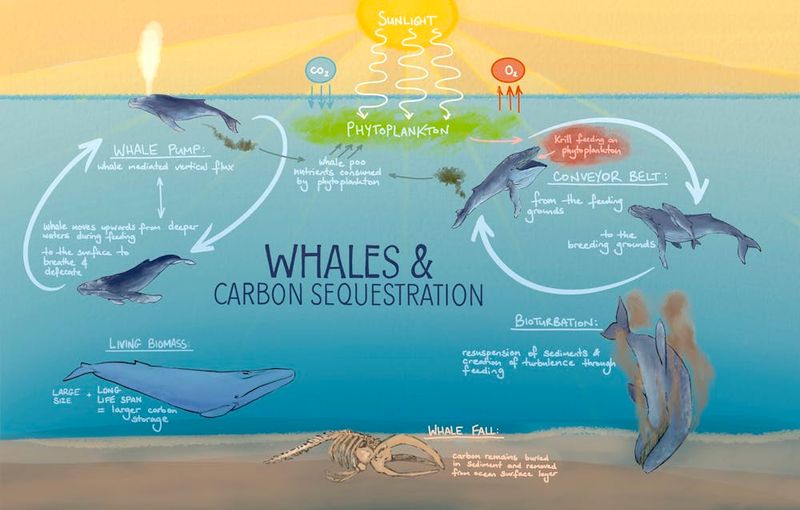
Every blue whale locks away tons of carbon in its massive body. When these giants die naturally, they sink to the ocean floor, taking all that carbon with them in what scientists call “whale falls.”
This carbon stays trapped for centuries instead of returning to the atmosphere as greenhouse gas. A single blue whale carcass can sequester 33 tons of CO2 – equivalent to thousands of trees working for years!
Unlike trees that eventually release carbon when they decompose, whale falls keep carbon locked in deep-sea sediments permanently. More whales mean more natural carbon sinks fighting climate change.
3. Food Web Balancers

Blue whales gulp down 4 tons of krill daily, creating a natural check on these tiny crustaceans. Without this predation, krill populations would explode and devour too much phytoplankton.
This balancing act maintains healthy phytoplankton levels, which feed countless other marine species. Think of blue whales as ocean thermostats – they regulate population sizes throughout the food web.
Interestingly, whale hunting disrupted this balance in the 20th century. As whale numbers plummeted, some Antarctic krill populations grew unchecked, altering entire ecosystem structures and demonstrating how a single species removal can trigger cascading effects.
4. Mobile Reef Creators

A blue whale’s skin hosts its own mini-ecosystem! Barnacles, whale lice, and microorganisms hitch rides on these swimming giants, creating living reefs that travel across ocean basins.
These hitchhikers get free transportation while helping clean the whale’s skin. Some species exist nowhere else on Earth except on whale bodies – they’re completely dependent on their massive hosts.
As whales migrate thousands of miles annually, they transport these creatures between different ocean regions. This creates genetic mixing and species distribution that wouldn’t happen otherwise, essentially making each blue whale a moving biodiversity hotspot.
5. Underwater Soundscape Shapers

Blue whale calls can travel 1,000 miles underwater, creating acoustic highways across oceans. Their deep rumbles – the loudest sounds made by any animal – establish communication networks that other marine life navigate by.
These sound patterns help whales find mates and coordinate group movements. Many fish and invertebrates have evolved to use these predictable sound markers for their own navigation.
When shipping noise drowns out whale calls, it doesn’t just affect the whales – it disrupts orientation systems for countless other species. The presence of healthy blue whale populations maintains these ancient acoustic signposts that organize marine life movements across vast distances.
6. Behavior Influencers
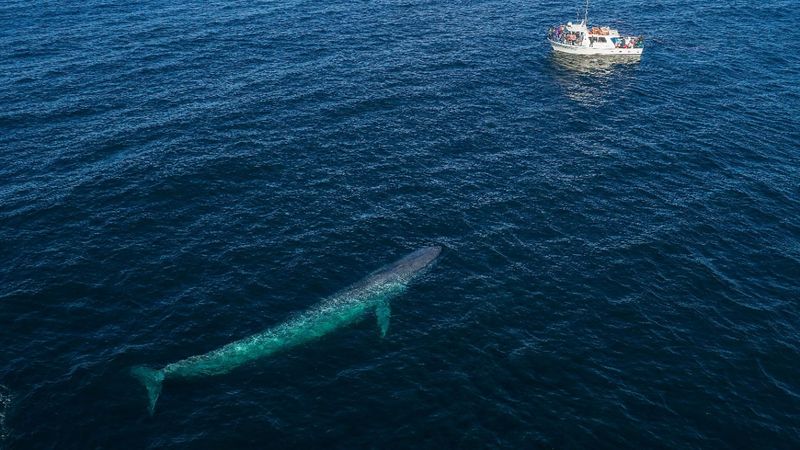
Krill don’t just passively get eaten – they’ve evolved specific behaviors to avoid their giant predators. When blue whales appear, krill form tighter swarms, dive deeper, or scatter in complex patterns.
These evasion tactics ripple through marine ecosystems. Other predators like seabirds and fish must adapt their hunting strategies when krill behavior changes due to whale presence.
Marine biologists call this a “behavior cascade” – one species influencing the actions of many others. A single blue whale swimming through an area can trigger behavior changes in organisms from microscopic plankton to large fish, reshaping how the entire community functions for hours or days afterward.
7. Ocean Mixing Machines

Each powerful fluke stroke from a blue whale’s massive tail creates underwater turbulence equivalent to small storms! This mixing action stirs up water layers that would otherwise remain separated.
The churning brings nutrients from deeper waters up toward sunlight where phytoplankton can use them. Scientists call this “whale turbulence” and have measured how it increases local productivity.
Collectively, all large whales generate mixing equivalent to all the winds, tides and other forms of ocean turbulence combined. A recovering blue whale population could significantly enhance nutrient distribution throughout the ocean, boosting productivity in areas that would otherwise remain nutrient-poor.
8. Marine Habitat Modifiers
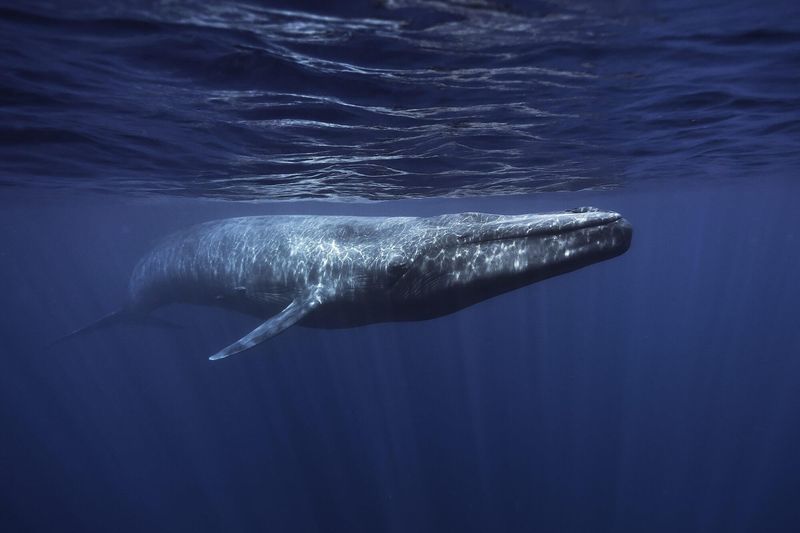
Blue whales physically reshape the seafloor when feeding near the bottom. Their massive bodies create depressions and stirred sediment that form microhabitats for bottom-dwelling organisms.
These disturbances – like underwater bulldozing – prevent any single species from dominating the seafloor. The result is greater biodiversity in areas regularly visited by feeding whales.
Even more dramatically, when a blue whale dies and sinks, its massive skeleton creates a unique habitat that supports specialized deep-sea communities for up to 75 years! These “whale fall” ecosystems host hundreds of species found nowhere else, making each blue whale a long-term biodiversity generator.
9. Evolutionary Pressure Exerters
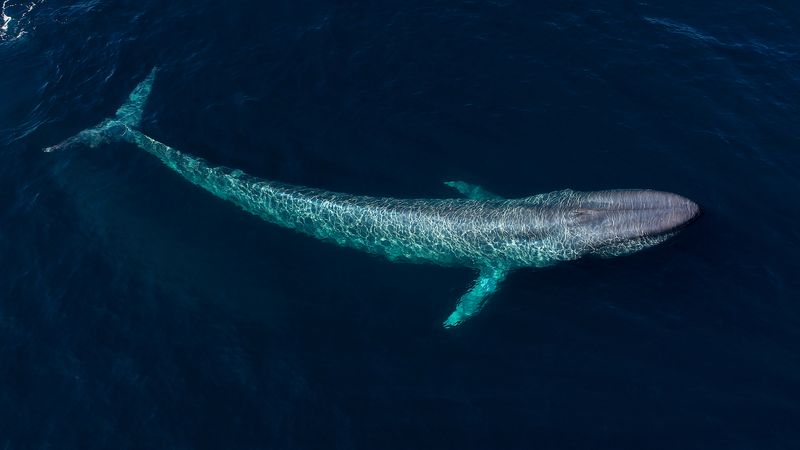
Krill evolved their swarming behaviors specifically in response to whale predation. Over millions of years, blue whales have shaped the very biology of their prey species!
This evolutionary pressure extends beyond krill. Fish that compete with whales for food have developed different feeding times or techniques to avoid competition with these giants.
Even some plankton species show evolutionary adaptations to whale presence, like faster reproduction cycles or chemical defenses. The existence of blue whales has literally shaped the genetic makeup of countless ocean species, demonstrating how one keystone species can drive evolution throughout an ecosystem.
10. Population Control Specialists
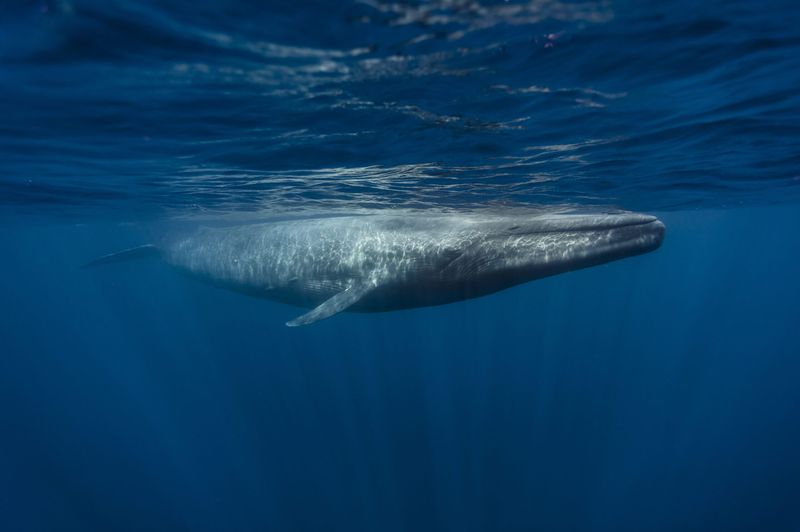
Blue whales selectively target specific krill species and sizes, preventing any single type from dominating. This selective feeding maintains diversity within krill populations themselves.
Without this targeted predation, certain aggressive krill species would outcompete others. The result would be less diverse plankton communities and simplified food webs.
Marine ecologists have documented how areas with healthy whale populations maintain more balanced and diverse plankton communities. As blue whale numbers slowly recover from commercial whaling, scientists are observing shifts in krill population structures – evidence that these ocean giants act as living regulators of marine biodiversity.
11. Coastal Economy Boosters
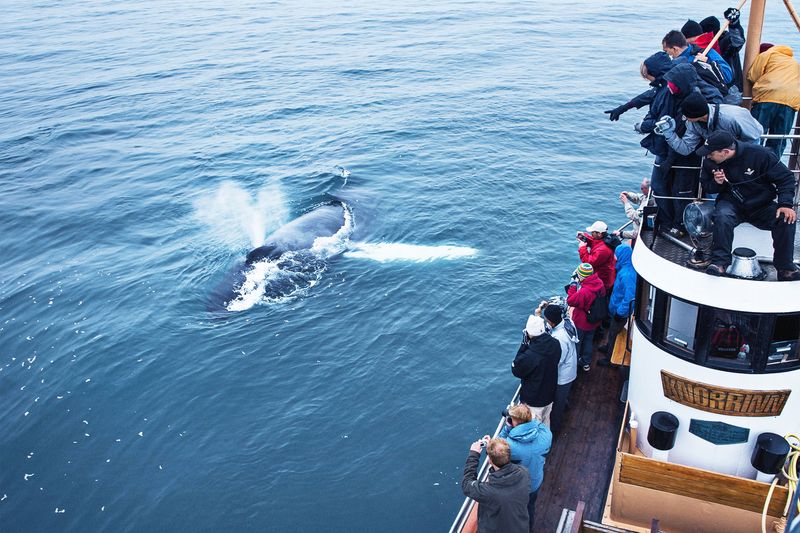
A single blue whale sighting can transform coastal economies through ecotourism. Whale watching generates over $2 billion annually worldwide, supporting thousands of jobs in coastal communities.
Unlike extractive industries, whale tourism provides sustainable income while incentivizing ocean conservation. Communities that once hunted whales now protect them for greater economic returns.
The presence of blue whales near coastlines also correlates with healthier fisheries. The nutrient cycling and ecosystem balancing these giants provide translate to more productive fishing grounds, creating a double economic benefit for human communities that share their waters with these magnificent creatures.
12. Scientific Knowledge Generators

Blue whales’ massive bodies hold medical secrets we’re just beginning to unlock. Their cancer resistance – extraordinary for creatures with so many cells – could revolutionize human cancer treatment.
Their unique cardiovascular systems, which pump tons of blood efficiently, inspire medical device designs. Even their blubber chemistry provides insights for developing new biofuels and lubricants.
Scientists studying blue whale migrations have improved our understanding of ocean currents and climate patterns. As we protect these living laboratories, we gain irreplaceable knowledge applicable to human health, engineering, and environmental science – making each blue whale a priceless repository of scientific discovery potential.

